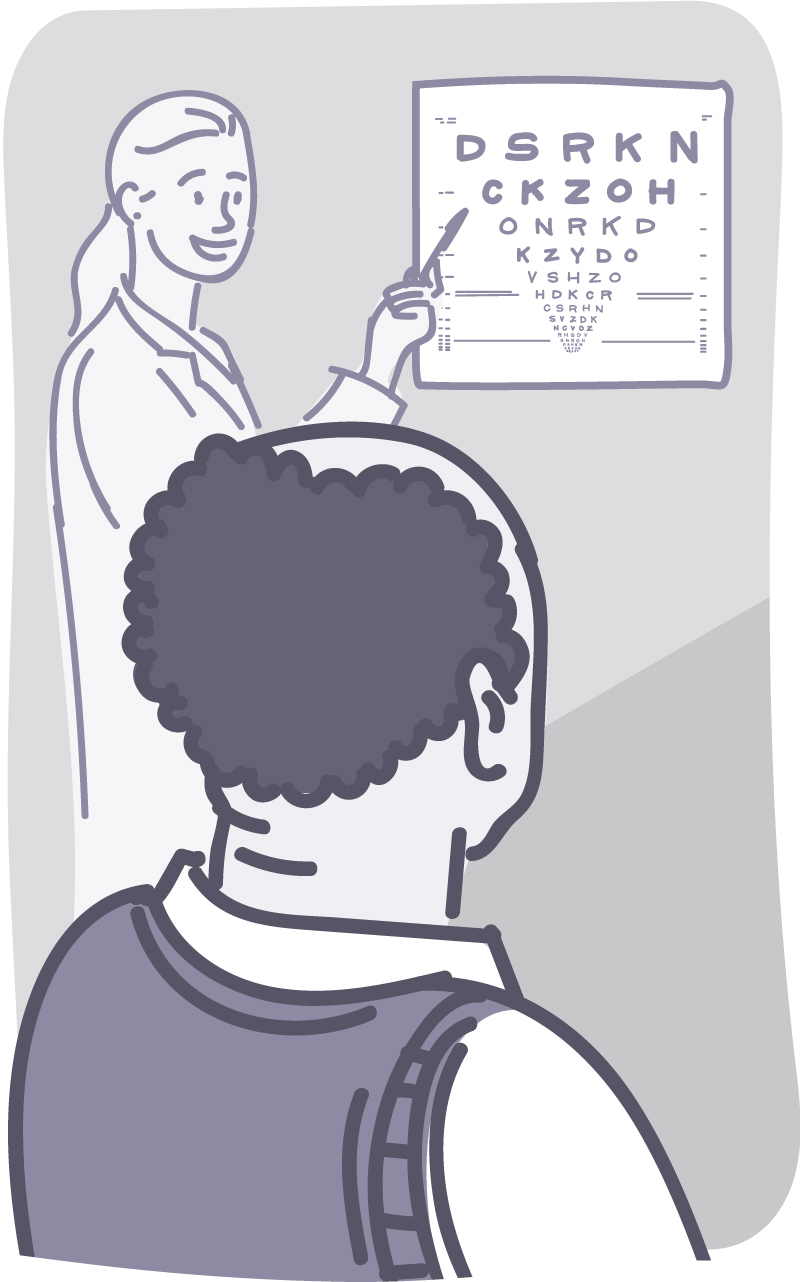Keep Your Vision Healthy
Learn About Comprehensive Dilated Eye Exams

People of all ages should have their eyesight tested to keep their vision at its best. Children usually have vision screening in school or at their pediatrician’s office. Adults, however, may require more than vision screening.
Even if your vision seems fine, the only way to know for sure that your eyes are healthy is to get a comprehensive dilated eye exam. When you should start getting such exams depends on many factors, including your age, race, and overall health.
Growing older puts you at risk for glaucoma, age-related macular degeneration, and diabetic retinopathy—the most common cause of vision loss from diabetes. These eye diseases tend to arise without any warning at their earliest stages. By the time you notice vision loss, it usually can’t be reversed. Timely treatment may let you keep more of your vision longer.
“Yearly comprehensive dilated eye exams starting at age 60 are the most effective and thorough way to detect eye diseases while we can still minimize vision loss,” says Dr. Paul A. Sieving, director of NIH’s National Eye Institute.
If you have diabetes, high blood pressure, or a family history of eye disease, you may need yearly comprehensive dilated eye exams earlier. African Americans have a higher risk and an earlier average onset of glaucoma compared to whites, and so are advised to have comprehensive dilated eye exams every 1 to 2 years starting at age 40.
A visual field test gauges the scope of what you’re able to see. Looking straight ahead and with alternating eyes covered, you’ll respond each time you see a light or the examiner’s hand held at the periphery of your vision. A screen or apparatus might also be used. Loss of peripheral vision may be a sign of glaucoma, which damages the optic nerve responsible for carrying visual messages from the eye to the brain.
A visual acuity test detects how well you see at various distances. Looking at an eye chart about 20 feet away, you’ll read aloud the smallest letters you see, first with one eye covered, then the other. The results can help assess disease progression or response to treatment, and may reveal a need for low-vision aids.
Next, the eyes are dilated by placing drops in each eye to widen the pupil, which allows more light to enter the eye. A magnifying lens is used to examine the tissues at the back of the eye, including the retina (light-sensitive tissue), the macula (the central region of the retina required for straight-ahead vision), and the optic nerve. Damage to these areas may be a sign of diabetic retinopathy, glaucoma, or age-related macular degeneration.
Tonometry measures the eye’s interior pressure by sending a quick puff of air onto its surface. High intraocular pressure is a risk factor for the optic nerve damage associated with glaucoma.
And that’s it. You’re good to go. Check out this video for a glimpse of what your eye care provider can see during a comprehensive dilated eye exam.
NIH Office of Communications and Public Liaison
Health and Science Publications Branch
Building 31, Room 5B52
Bethesda, MD 20892-2094
Contact Us:
nihnewsinhealth@od.nih.gov
Phone: 301-451-8224
Share Our Materials: Reprint our articles and illustrations in your own publication. Our material is not copyrighted. Please acknowledge NIH News in Health as the source and send us a copy.
For more consumer health news and information, visit health.nih.gov.
For wellness toolkits, visit www.nih.gov/wellnesstoolkits.




